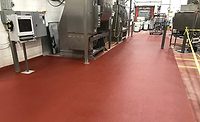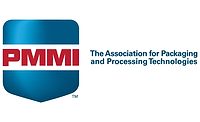Improving snack and bakery facility efficiency for increased profit
Streamlining snack and bakery facility efficiency can help companies reduce energy usage, improve food safety, boost throughput and save money.




courtesy of Pepperidge Farm

courtesy of Enjoy Life Foods





According to the U.S. Environmental Protection Agency’s Energy Star program, the domestic baking industry consumes an estimated $800 million worth of purchased fuels and electricity per year, as noted in its guide, “Energy Efficiency Improvement and Cost Saving Opportunities for the Baking Industry” (Nov. 2016 update, available on www.energystar.gov). Well-run bakeries can reduce their annual energy expenditure by up to 10 percent while simultaneously cutting expenditures related to mitigating emissions and waste. That can translate into significant capital savings.
Implementing increased automation and adopting data collection and analysis systems likewise hold great potential for streamlining operations and bolstering the bottom line.
Whether retrofitting an existing facility, starting a new plant from the ground-up, or simply updating specific aspects of snack or bakery operations, multiple considerations offer potential for strategic efficiency improvements.
The case for automation
“The least-efficient aspects of bakeries include any of the manual, labor-intensive aspects of the production process,” says Jon Miller, director of business development, AM King, Charlotte, NC.
Automating as many aspects of the production process is key to achieving increased efficiency, notes Miller. “It allows processes to run faster and more efficiently and with less labor issues and errors. While automating aspects of the process can have higher upfront costs and more-intense staff training, it allows human resources to be deployed toward more quality-control and supervisory roles to continue improving overall bakery efficiencies.”
A top inefficiency challenge in today’s industry is the workforce itself, notes Jeff Dearduff, corporate director of baking and snack, The Austin Co., Cleveland. “While the production lines are designed better and have reduced the need for the labor levels of the past, the quality of the labor today is not what it once was. Even though the machinery and systems are designed and operated with efficiency in mind, it still requires a workforce that can recognize issues, and react to those issues with urgency.”
Company growth and automation often go hand-in-hand. “As companies grow and consumers begin to demand more product, it becomes incredibly difficult for a manually driven operation to keep up,” says Thomas Davis, territory manager, WeighPack Systems Inc., Las Vegas. “By incorporating some level of automation, companies can experience more up time and cut costs in the long-run.”
Integrating supervisory control and data acquisition (SCADA) helps operators pinpoint areas of concern. “Many of our customers have realized that a robust controls and automation system, paired with an appropriate SCADA philosophy, allows them to collect and evaluate a wide range of data points throughout their process,” says Randolph Wilson, director of process engineering, Gray Construction, Lexington, KY. “Based on the data, operational changes can be made to increase the efficiency of the equipment, which can directly impact the process and utility consumption.”
Streamlining operations
Robust data management can provide a distinct edge in processing today. “Implementation of lean manufacturing principles and Six Sigma tools and techniques are the first place to start when working through the issues of an inefficient production line,” says Dearduff. “When these systems are adopted and used properly, they can be applied to any problem that a team faces.” These might include work performance, line speed, waste and energy usage.
“An additional method to improve operational efficiencies in bakeries is to use more liquid ingredients with automated metering,” says Miller. “For example, using a liquid sugar mix in lieu of granulated or powdered sugar reduces the need for an explosion-proof facility design, increases the automation of ingredient metering, and aids in the efficiency of cleaning processes.”
Selecting “smart” equipment can go a long way toward streamlining operations. “We are seeing a real emphasis on added diagnostic and preventive failure features on our machines that help catch faults before they become catastrophic,” says Hoskins. “In several of our systems, we are using smart-sensing technology that can determine baking pan configurations and positions so operators can easily change over machines, but at the same time detect possible pan jams in the machines prior to them becoming serious downtime events.”
Davis recommends working with equipment suppliers to perform thorough factory systems integration testing prior to delivery and implementation. “With factory systems integration, all equipment pieces are assembled as a cohesive unit, and the actual product is run to ensure a seamless production flow.”
In many snack and bakery facilities, coating equipment can be a source of downtime, notes Josh DeVoll, director of market solutions, Spraying Systems Co., Wheaton, IL. “Ingredients such as oils and oil-based products, glazes, chocolate, or icings can be challenging. Viscosity, seasonal temperatures or simply the fact that an ingredient is solid at room temperature affect your ability to apply ingredients consistently.” He cites examples like applying oil on pizzas, pan-release operations, bun glazes and butter toppings.
When they upgrade to new, more-precise equipment, DeVoll has found bakeries can save an average of 50 percent of the ingredient being sprayed by eliminating the common process of over-applying sprayed ingredients. Other savings relate to reduced labor related to cleanup or manual application methods. “Cleaning efficiencies go up, because excess fluid is not being lost to an oven, pans or air-handling equipment,” he says.
Shipping frozen product is also increasing across the industry, and the freezing process requires careful attention to detail. “This is an expensive and energy-intensive activity, which requires diligent quality-control methods,” says Miller.
Sanitation strategies
A growing factor in overall plant efficiency is sanitation, notes Rick Hoskins, president, Colborne Foodbotics, Lake Forest, IL. “Customers are putting more emphasis on consistent sanitation routines that require more breakdown and disassembly of older equipment.” Especially when working with older equipment, this translates to longer periods of downtime.
“Outdated equipment often becomes a major inefficient feature to a bakery, as these pieces fail to keep up with production, have difficult and slow product-switchover capabilities, are more difficult to clean, and begin to need more repetitive maintenance,” says Miller. He notes that investing in updated equipment that has engineered in-line clean-in-place (CIP) systems and simplified disassembly methods can greatly reduce cleaning and maintenance time—and provide more-complete food-safety assurances.
Dearduff notes that water has come back into play as a favored way to clean lines and other surfaces. “Dry cleaning was all the rage a few years back, but swabbing for surface cleanliness has caused people to revert back to the water hose.” When water is part of the sanitation standard operating procedures (SSOP), the design of the floor drain system, floor sloping and the drain equipment become a major area of focus.
The preferred way to handle the assurance of clean food-contact surfaces is with dry steam, suggests Dearduff. “Many portable dry steam generators and tools are available. When designing something new, it might be worth the effort to industrialize the dry steam system so that the supply and tools are readily available in all areas.”
But dry cleaning should always factor into planning, whenever it’s relevant, continues Dearduff. “Vacuum systems can be installed with a central system that feeds multiple outlets throughout the food plant. The best of both worlds align and reinforce each other when you have a central vacuum system to pick up all of the loose debris, followed by a process using dry steam to sanitize the surfaces, including the floor drains.”
Davis notes design elements can streamline the cleaning and sanitation process for packaging equipment. “Convenient, quick-release catch hinges make cleaning and servicing very efficient. Hinges can be released, giving access to an underneath carriage box that can be easily emptied and wiped down prior to the next production run. Also, from a sustainability standpoint, we have incorporated a precise ‘no product, no bag’ sensing technology that helps prevent film waste.”
Unduly excessive downtime required for cleaning and sanitation can hinder the process, notes Gerardo Martinez, technical service representative, Wire Belt Co. of America, Londonderry, NH. In order to reduce downtime and help prevent recalls related to pathogens, he recommends stainless steel equipment with CIP design. He suggests using open-mesh, stainless steel conveyor belts with an open design to allow for excellent drainage in coating and cooling operations—options that don’t have spots that could trap and hide product particles.
Data collection can also improve food safety. “The controls and automation system, and the data that can be collected and evaluated from it, can be used by plant-level food-safety professionals to identify potential problem points throughout the process that could lead to food-safety concerns,” says Wilson. “During the design of the facility’s automation and control system, we work with our customers to develop the appropriate level of track-and-trace and critical-control-point monitoring to support their business and specific regulatory requirements.” He notes that electronic monitoring of critical control points also allows for efficient data retrieval to meet rapid changes in business and regulatory requirements.
Airflow should also factor into initial plans—for efficiency and food safety. “Engineering a coordinated positive and negative air-pressure design for each production room ensures that all airflow is migrating from finished goods areas to raw ingredient spaces,” says Miller. “Understanding the client’s allergen and gluten product plan will guide the plant design on separating these areas to eliminate cross-contamination.”
Marius Czech, food market manager, Klüber Lubrication, Londonderry, NH, notes that some food production facilities today are still not using H1 certified lubricants in their operations. “The new generation of NSF H1 certified food-grade lubricants offer the same or better performance compared to conventional lubricants.” He suggests that converting to all food-grade lubricants in a plant greatly reduces contamination risk.
Czech notes that choosing the right lubrication can minimize maintenance expense, maximize safety and profitability. “Extreme temperature variances, long running times and humidity during cleaning are only a few of the challenges a lubricant must overcome in snack and bakery equipment applications. Through our extensive testing capabilities and our close cooperation with the OEMs, we offer lubricants that are customized to each specific lubrication point to reach optimal maintenance intervals.”
Furthermore, accurate labeling of the lubrication points and of the equipment ensures the right usage of lubricants and avoids the danger of contamination, notes Czech.
Starting from scratch
When designing and building a new snack facility or bakery from the ground-up, companies have multiple options to consider when it comes to getting efficiency right from the start.
It’s important to understand the operational plans for a facility with respect to potential short-term “within the walls” expansions, as well as long-term facility expansions, notes Wilson. “This allows us to develop a layout that will accommodate future equipment or processes with significant modifications to the building foundations, steel structure or utilities.”
Proper planning and layout of the building systems, structure, and construction materials need to achieve the right balance of capital and operating costs, food safety, and overall efficiency, notes Dearduff. “From a building standpoint, the goal would be to have a material and process flow that is seamless and as straight as possible from one end to the other.”
Miller also notes that the plans should take into consideration support and ancillary spaces, while also looking toward future growth and expansion.
Several other aspects should factor into decision-making for new facilities, notes Miller:
- Variable-frequency drives on equipment, allowing equipment to gradually ramp up and down based on load levels
- Keeping ceiling heights low to reduce heating and cooling demands
- Using recovery systems for residual heat
- LED lighting to optimize lighting levels while reducing energy usage
Facilities can also install motion sensors to further economize on energy required to run lighting.
Some bakeries have begun making strides in maximizing use of renewable energy sources, capitalizing on solar and wind energy, as well as adding fuel cells, saving millions in projected energy costs over the lifespan of the cells.
Improving plant efficiency is an ongoing pursuit—one well worth pursuing considering the significant gains that await related to profit potential.
This article was originally posted on www.snackandbakery.com.
Looking for a reprint of this article?
From high-res PDFs to custom plaques, order your copy today!











